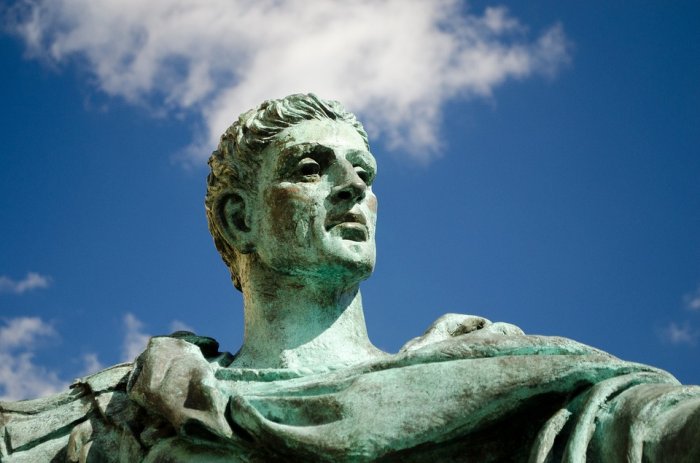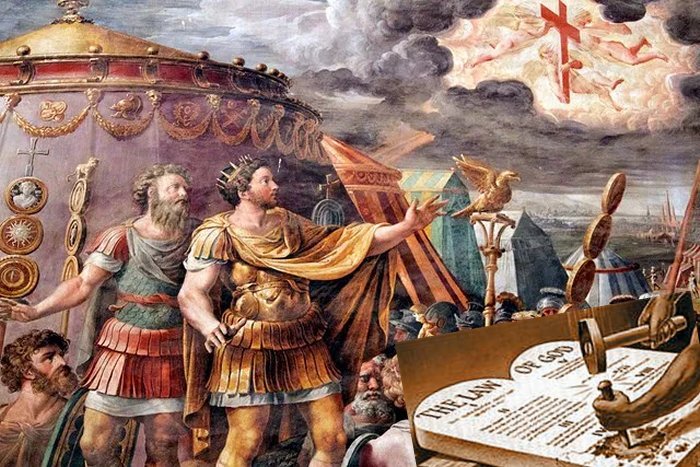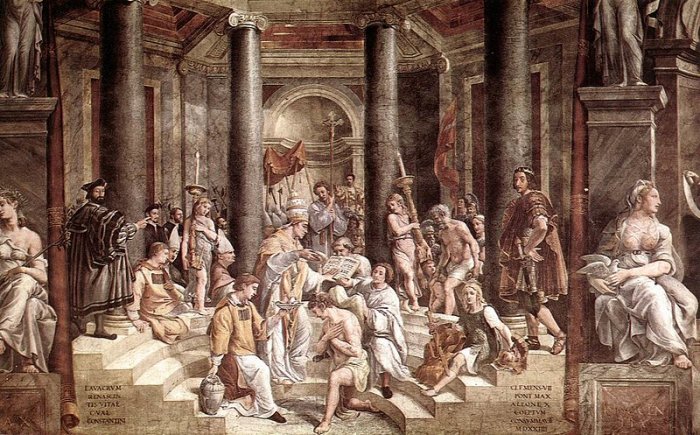Constantine The Great – Did First Roman Christian Emperor Use Faith For His Own Agenda?
David Tee - AncientPages.com - Constantine was born in 280 BC to not so humble origins as his father, Constantine Chlorus, who ruled as a sub emperor with 2 others and Diocletian. His mother was Helena who in later years established herself as an ancient explorer and archaeologist, so to speak.
Because his father was a ruler of a section of the Roman Empire, it was expected that Constantine would assume power once his father passed on. This scenario led to what may have been the first Christian Emperor of the Roman Empire.
Sculpture of Constantine the Great in York, UK. Credit: Public Domain
Even though Constantine was in line for a portion of the throne, his rise to the top was not an easy one. Diocletian was not a good ruler, not that he wasted money, resources etc., but that he sought to wipe out the Christian faith.
Galerius and Maximian, the other two sub rulers, followed suit and strove to destroy churches, persecute believers and so on. Constantine’s father did not participate and refused to be part of the persecution. This stand led to the final confrontation between Constantine, Galerius and Maximian.
Constantine’s Strange Dream And Conversion To Christianity
It was the final battle between the sub rulers that led Constantine to take the seat as total emperor over the remaining Roman Empire. As mentioned earlier on Ancient Pages, Roman Emperor Constantine was a pagan monotheist, a devotee of the sun god Sol Invictus, the unconquered Sun, but the battle of the Milvian Bridge and his dream changed his faith.
Faced with a rival army twice the size of his own, Roman Emperor Constantine realized that he probably would die in battle the next day.
On March 7, 321 AD., Emperor Constantine (r. 3306 – 337 AD) passed his famous national Sunday law. It was ‘dies Solis’—day of the sun, "Sunday"—as the Roman day of rest.
Before the Milvian Bridge battle he and his army saw a cross of light in the sky above the sun with words in Greek that are generally translated into Latin as In hoc signo vinces (‘In this sign conquer’).
The night before the Emperor had a very powerful dream. In his dream an angel appeared before him bearing the image of a cross, uttering the fateful words “By this symbol, you shall conquer.”
Constantine obeyed his vision and removed the normal Roman standard from all weapons, shields and standards and replaced it with the cross. After winning victory Constantine gave credit to the Christian God and is said to have converted to the faith.
A few months after his victory, he issued the Edict of Milan legalizing the Christian faith and Diocletian’s persecution era came to an end.
Constantine’s Contribution To Christianity
The Edict of Milan was not the only favorable act Constantine contributed to the faith of Christians. In 325 AD, the church was in a bit of a pickle. While the biblical books of the Bible were being circulated independently from each other, there were also a few problems with those who did not subscribe completely to the Christian beliefs.
Their heretical writings were causing problems among the faithful. Constantine convened the council of Nicaea allowing the church leaders to put together the Bible as we know it, maybe with a few books missing, and remove or identify heretical teaching and have it removed from the church.
But that is also not all he did. At the same time, someone, possibly Markaros the bishop of Jerusalem, sent word to Constantine that the Tomb of Christ was found. Constantine immediately sent help to have the tomb excavated and a church built at the site.
His mother was sent to oversee construction. Parts of that church stand today and is known as the Church of the Holy Sepulchre.
Constantine’s Christian Crisis
Constantine in a letter to the council of Arles did confess to being a Christian, yet scholars today question that declaration and his overall Christian faith. This questioning comes from viewing some of his actions throughout the course of his life.
While Constantine favored his mother, he took issue with other members of his family. He had his eldest son, second wife and the husband of his favorite sister executed. No one knows why he did these things.
The Baptism of Constantine, as imagined by students of Raphael. Credit: Wikipedia
Then he did away with the old Roman gods but delayed his baptism until he was near death. Some say that this was due to the ancient belief that sins could not be forgiven after one was baptized.
Also, even though he removed old Roman gods, he continued to act in a pagan manner. These actions lead some modern scholars to the idea that Constantine may have used the Christian faith to further his own agenda.
Helena, his mother, was a very solid believer and she may have helped guide her son through his Christian life. But that is something that is not known. It is not even sure when she converted to the Christian faith.
As it stands, Constantine’s achievements greatly helped the church. As to his personal beliefs, these achievements help demonstrate where his faith lay but they do not tell us how solid a believer he really was.
Written by – David Tee - AncientPages.com
Copyright © AncientPages.com All rights reserved. This material may not be published, broadcast, rewritten or redistributed in whole or part without the express written permission of AncientPages.com
Expand for referencesReferences
(2004). Tabletalk Magazine, August 2004: A Defining Era: The History of the Church in the Fourth Century, 15.
The Tomb of Christ in the Church of the Holy Sepulchre By Bryant G. Wood (2000). Bible and Spade, 13, 13.
Those Indefatigable Byzantines! By Gary A. Byers (1999). Bible and Spade, 12, 81.
Evidence of Earliest Christian Pilgrimage to the Holy Land Comes to Light in Holy Sepulchre Church By Magen Broshi (1977). BAR, 3(4).
The Evolution of a Church—Jerusalem’s Holy Sepulchre By J.-P. B. Ross (1976). BAR, 20(3).
More From Ancient Pages
-
 Birch Bark Tar Production Techniques Offer Evidence Neanderthals Had Cognitive Skills Similar To Modern Thinking
Archaeology | Sep 26, 2023
Birch Bark Tar Production Techniques Offer Evidence Neanderthals Had Cognitive Skills Similar To Modern Thinking
Archaeology | Sep 26, 2023 -
 Fascinating Discovery Of An Inhabited Underground World In Medieval Wales
Featured Stories | Mar 2, 2024
Fascinating Discovery Of An Inhabited Underground World In Medieval Wales
Featured Stories | Mar 2, 2024 -
 Chromium Steel Was First Produced In Ancient Persia
Ancient Technology | Sep 24, 2020
Chromium Steel Was First Produced In Ancient Persia
Ancient Technology | Sep 24, 2020 -
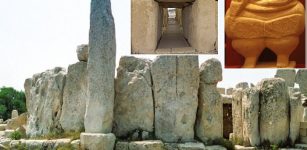 Hagar Qim: “Standing/Worshipping Stones” – Megalithic Complex In Malta Dated To 3600 – 3200 BC
Featured Stories | Feb 19, 2023
Hagar Qim: “Standing/Worshipping Stones” – Megalithic Complex In Malta Dated To 3600 – 3200 BC
Featured Stories | Feb 19, 2023 -
 Unexplained Visions Of Airmen – Controversial Investigation – Part 2
Featured Stories | Feb 9, 2020
Unexplained Visions Of Airmen – Controversial Investigation – Part 2
Featured Stories | Feb 9, 2020 -
 World’s Oldest Dictionaries Are 4,500-Year-Old Cuneiform Tablets Discovered In Ebla
Ancient History Facts | Aug 19, 2016
World’s Oldest Dictionaries Are 4,500-Year-Old Cuneiform Tablets Discovered In Ebla
Ancient History Facts | Aug 19, 2016 -
 Evolution Mystery – Mini-Proteins In Human Organs Appeared ‘From Nowhere’
Human Beginnings | Feb 20, 2023
Evolution Mystery – Mini-Proteins In Human Organs Appeared ‘From Nowhere’
Human Beginnings | Feb 20, 2023 -
 Pharaoh Ramses Was Not One Of History’s Greatest Generals – New Study Ruins His Formidable Reputation
Archaeology | Jan 31, 2018
Pharaoh Ramses Was Not One Of History’s Greatest Generals – New Study Ruins His Formidable Reputation
Archaeology | Jan 31, 2018 -
 Was Aztec And Mixtec Turquoise Mined In the American Southwest?
Archaeology | Jun 15, 2018
Was Aztec And Mixtec Turquoise Mined In the American Southwest?
Archaeology | Jun 15, 2018 -
 Mythical Helen Of Troy: Beautiful Wife Of King Menelaus Of Sparta
Featured Stories | Jul 5, 2019
Mythical Helen Of Troy: Beautiful Wife Of King Menelaus Of Sparta
Featured Stories | Jul 5, 2019 -
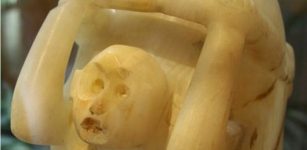 Pulque: Ancient Drink Of The Gods Is Popular Again But It Has Odd Side-Effects
Ancient Traditions And Customs | Jun 29, 2017
Pulque: Ancient Drink Of The Gods Is Popular Again But It Has Odd Side-Effects
Ancient Traditions And Customs | Jun 29, 2017 -
 Complete Neolithic Cursus Discovered On Isle of Arran, Scotland
Archaeology | Sep 7, 2023
Complete Neolithic Cursus Discovered On Isle of Arran, Scotland
Archaeology | Sep 7, 2023 -
 Mystery Of The Lost Arctic Civilization- Two Ancient Mummies Found At The Zeleny Yar Necropolis
Archaeology | Jul 20, 2017
Mystery Of The Lost Arctic Civilization- Two Ancient Mummies Found At The Zeleny Yar Necropolis
Archaeology | Jul 20, 2017 -
 Did Pharaoh Shishak Plunder King Solomon’s Temple?
Biblical Mysteries | Jan 15, 2020
Did Pharaoh Shishak Plunder King Solomon’s Temple?
Biblical Mysteries | Jan 15, 2020 -
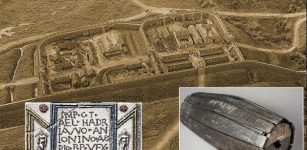 Antonine Wall: Impressive Roman Frontier Built By Empire’s Three Legions In Scotland
Civilizations | Jan 18, 2018
Antonine Wall: Impressive Roman Frontier Built By Empire’s Three Legions In Scotland
Civilizations | Jan 18, 2018 -
 Enigma Of Lycurgus Of Sparta – Great Reformer And His Foundation Of A Warlike Superior State
Featured Stories | Jan 9, 2023
Enigma Of Lycurgus Of Sparta – Great Reformer And His Foundation Of A Warlike Superior State
Featured Stories | Jan 9, 2023 -
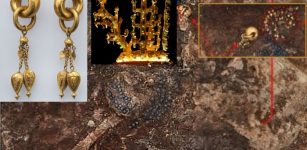 South Korea’s Silla-Era Tombs Reveal More Priceless Jewelry
Archaeology | Sep 9, 2020
South Korea’s Silla-Era Tombs Reveal More Priceless Jewelry
Archaeology | Sep 9, 2020 -
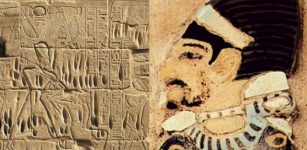 Mysterious Shasu – Bandit Canaanites Or Israelites?
Civilizations | Jan 14, 2019
Mysterious Shasu – Bandit Canaanites Or Israelites?
Civilizations | Jan 14, 2019 -
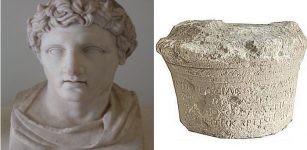 2,000-Year Old Engraved Kurdistan Tablet Referring To A Hellenistic Ruler Demetrius – Analyzed
Archaeology | Dec 14, 2020
2,000-Year Old Engraved Kurdistan Tablet Referring To A Hellenistic Ruler Demetrius – Analyzed
Archaeology | Dec 14, 2020 -
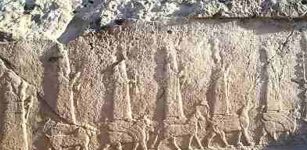 Ten Inscriptions Related To Sargon Unearthed At Ancient Assyrian Site In Iraq’s Kurdistan Region
Archaeology | Jan 20, 2020
Ten Inscriptions Related To Sargon Unearthed At Ancient Assyrian Site In Iraq’s Kurdistan Region
Archaeology | Jan 20, 2020

